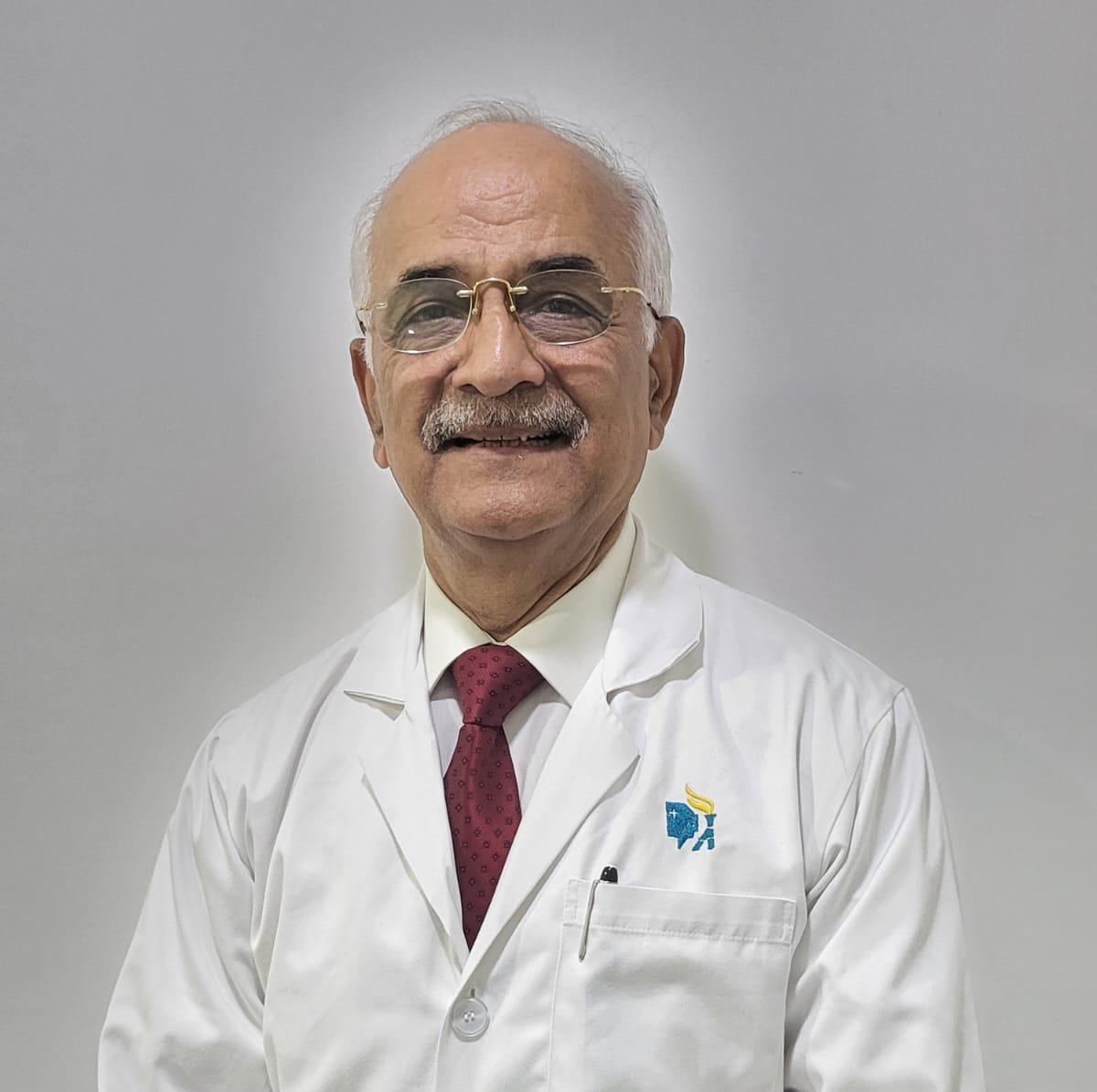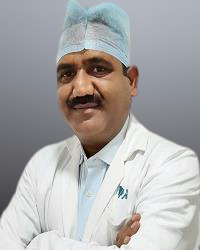Search Result: 6

Dr Akhilesh Kumar
MBBS,MS(General surgery)
Registration No
3385
Language
English, हिंदी

20 years experience overall

Sector 26 , Noida
WED, THU | SAT(08:00 AM-11:00 AM | 11:00 AM-02:00 PM)

Dr Deepak Arora
MBBS, MS- General Surgery, FICS
Registration No
4234325
Language
English

35 years experience overall

Sector 26 , Noida
MON, WED, THU, SAT(05:00 PM-07:00 PM)

Dr Ratna Ahuja
MBBS, MS (General Surgery)
Registration No
3452
Language
English, ಕನ್ನಡ

25 years experience overall

Sector 26 , Noida
TUE | THU | FRI | SAT(11:30 AM-02:00 PM | 12:00 PM-02:00 PM | 05:00 PM-07:00 PM | 09:00 AM-11:00 AM)

MON, FRI | TUE- THU, SAT(11:00 AM-02:00 PM | 02:00 PM-05:00 PM)

Dr Shyam Sunder Pachisia
MBBS,MS ( General Surgery)
Registration No
10526
Language
English

24 years experience overall

Sector 26 , Noida
THU | TUE | MON | FRI(11:00 AM-02:00 PM | 05:00 PM-08:00 PM | 08:00 AM-11:00 AM | 02:00 PM-05:00 PM)

Dr Sudhir Kumar
M.B.B.S., M.S.
Registration No
10525
Language
English

15 years experience overall

Sector 26 , Noida
MON | TUE, FRI | WED(05:00 PM-08:00 PM | 08:00 AM-11:00 AM | 11:00 AM-02:00 PM)
Frequently Asked Questions for Umbilical Hernia in Noida
Yes, umbilical hernias are often congenital, meaning they are present at birth. They occur when the abdominal muscles fail to close completely around the umbilical cord during foetal development. Most umbilical hernias resolve on their own by the age of 3-4 years.
Umbilical hernias are typically not cancerous. However, if you notice any unusual changes in the appearance or size of the hernia, it is essential to consult a doctor for further evaluation.
After umbilical hernia surgery, keeping the incision area clean and dry is essential. Follow your doctor’s instructions regarding pain medication and feeding. Avoid exposing the incision to excessive moisture or pressure and monitor your child for any signs of infection.
During umbilical hernia surgery, you will be under anaesthesia and not experience any pain. After the surgery, you may experience some discomfort or mild pain at the incision site, but this can be managed with pain medication.
In some cases, small umbilical hernias that do not cause any symptoms may be managed conservatively without surgery. However, it is essential to regularly monitor the hernia and consult with a doctor to ensure it does not grow or cause any complications.
Umbilical hernias larger than 1.5 centimetres in diameter usually require surgical intervention. However, the decision for surgery is based on various factors such as the patient’s symptoms, risk of complications, and overall health.
Anyone with a diagnosed umbilical hernia is eligible for surgery. However, it is essential to consult a surgeon to assess your health and determine if surgery is the best option.
Common symptoms of umbilical hernia include a bulge or swelling near the belly button, discomfort or pain at the site, and occasional nausea or vomiting. In some cases, the bulge may disappear when lying down. Some people with umbilical hernia may not experience any symptoms. However, if they notice a bulge or swelling near the belly button or if there is discomfort or pain in the area, it is important to seek a diagnosis and treatment from a doctor.
The duration of umbilical hernia surgery varies based on the complexity and size of the hernia. The surgery can usually be done within 30-60 minutes.
Before undergoing umbilical hernia surgery, your doctor may ask you to undergo specific tests such as blood and imaging studies. You may also need to stop taking certain medications and avoid eating or drinking for a few hours before the surgery.
After umbilical hernia surgery, you will be advised to take it easy for a few days and avoid strenuous activities. Your doctor may give you pain medication and recommend wearing a supportive abdominal binder.
The success rate of umbilical hernia surgery is generally high, with most patients experiencing complete resolution of symptoms. The success rate depends on various factors such as the patient’s overall health, the size of the hernia, and the surgeon’s expertise.
The recovery time for umbilical hernia surgery varies from person to person. The average patient can be seen resuming their normal activities within 2-4 weeks. However, following your doctor’s post-operative instructions is vital for a smooth recovery.
A general surgeon usually performs umbilical hernia surgery. They have the expertise to diagnose and surgically repair the hernia.
The condition of umbilical hernia occurs when the intestine or fatty tissue protrudes through a spot in the abdominal muscles around the belly button. It appears as a bulge or swelling under the skin.
Related Procedures in Noida
- Doctors for Appendicitis in Noida
- Doctors for Inguinal Hernia in Noida
- Doctors for Incisional Hernia in Noida
- Doctors for Endoscopy in Noida
- Doctors for Colonoscopy in Noida
- Doctors for Umbilical Hernia in Noida
- Doctors for Whipple procedure in Noida
- Doctors for ERCP Stone Removal in Noida
- Doctors for Epigastric Hernia in Noida
- Doctors for Sleeve gastrectomy in Noida
- Doctors for Piles Surgery in Noida
- Doctors for Gallstones Removal in Noida
Related Treatments in Noida
- Doctors for Cirrhosis Treatment in Noida
- Doctors for Constipation Treatment in Noida
- Doctors for Crohns Disease Treatment in Noida
- Doctors for Gallstones Treatment in Noida
- Doctors for Irritable Bowel Syndrome Treatment in Noida
- Doctors for Portal Hypertension Treatment in Noida
- Doctors for Rectal Prolapse Treatment in Noida
- Doctors for Ulcerative Colitis Treatment in Noida
Other Specialities in Noida
- Best Urologist in Noida
- Best Pulmonologist in Noida
- Best General Physician in Noida
- Best Endocrinologist in Noida
- Best Cardiologist in Noida
- Best Oncologist in Noida
- Best Radiologist in Noida
- Best Orthopedics in Noida
- Best Hepatologist in Noida
- Best Gynecologist in Noida
- Best Dermatologist in Noida
- Best Gastroenterologist in Noida
- Best Psychologist in Noida
- Best Ent Specialist in Noida
- Best Nephrologist in Noida
- Best Rheumatologist in Noida
- Best Diabetologist in Noida
- Best Psychiatrist in Noida
- Best Neonatologist in Noida
- Best Dentist in Noida
- Best Dietitian in Noida
- Best Haematologist in Noida
- Best Pediatrics in Noida
- Best General Surgeon in Noida
Top Hospitals in India
- Hospitals in Ahmedabad
- Hospitals in Bangalore
- Hospitals in Bhubaneswar
- Hospitals in Bilaspur
- Hospitals in Chennai
- Hospitals in Delhi
- Hospitals in Guwahati
- Hospitals in Hyderabad
- Hospitals in Indore
- Hospitals in Kolkata
- Hospitals in Madurai
- Hospitals in Mumbai
- Hospitals in Mysore
- Hospitals in Nashik
- Hospitals in Noida
- Hospitals in Visakhapatnam
- Hospitals in Lucknow
- Hospitals in Bhopal
- Hospitals in Karur
- Hospitals in Kochi
- Hospitals in Nellore
- Hospitals in Trichy
- Hospitals in Kakinada
© Copyright 2024. Apollo Hospitals Group. All Rights Reserved.




 Call Now
Call Now






